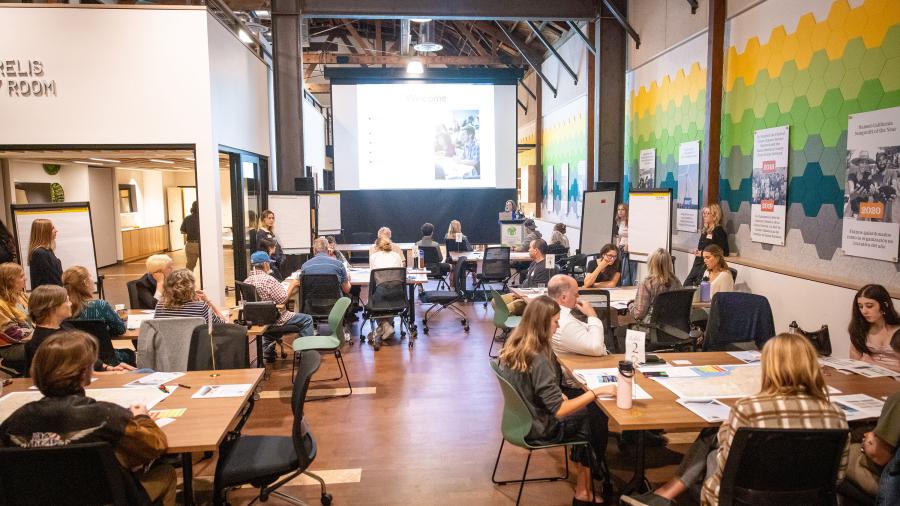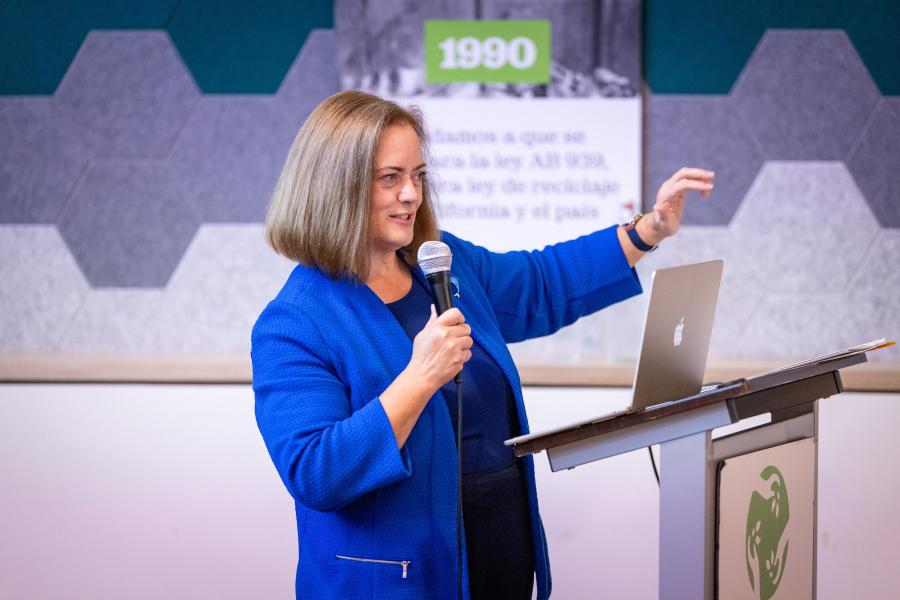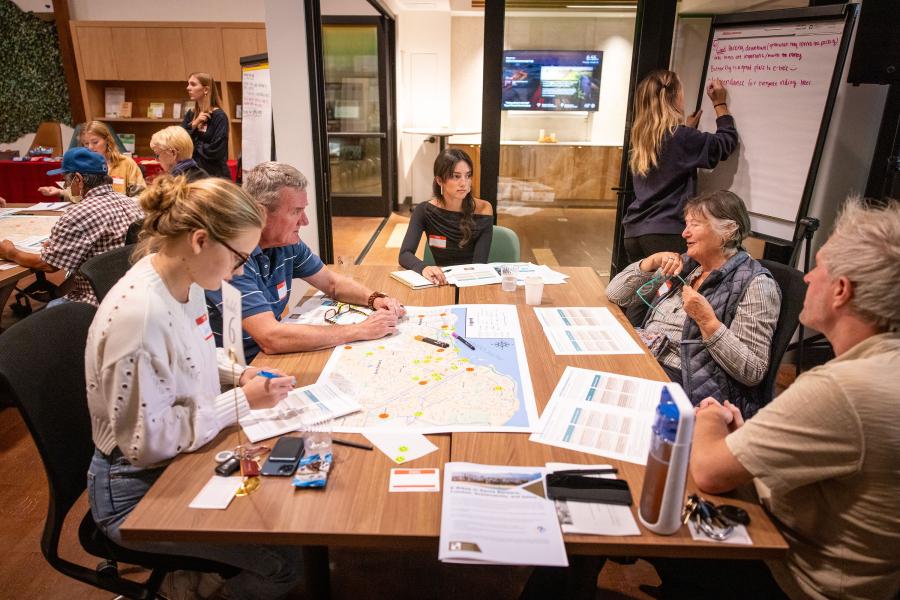Westmont News
Youth Freedom vs. Public Safety Santa Barbara Grapples With E‑Bike Surge

By
Scott Craig
Since six blocks of State Street closed in spring 2020, e‑bike usage has risen steadily, and the resulting increase in accidents has alarmed residents and local politicians. The Westmont Center for Dialogue and Deliberation decided to tackle this thorny issue at a community roundtable event with more than 50 people Oct. 23 at the Community Environmental Center's Environmental Hub downtown.

The conversation focused on the shared values among Santa Barbara citizens with the questions: What things do we all hold valuable? What hopes for Santa Barbara do we share, even if we differ on how to achieve them?
Participants tried to balance the need for safety, freedom and sustainability. In the end, possible actions included adding additional bike lanes and bike-only paths, and requiring a license and registration for e-bike users. Among the drawbacks were additional bureaucracy and costs, compliance challenges and maintenance expenses.

The gathering included Mayor Randy Rowse, Kathi King, director of outreach and education at the Community Environmental Council, law enforcement officials and e-bikers.
Madison Rhodes ‘28, a notetaker at one of the tables, said the experience required her to listen intently to each participant and record the conversation with as little bias as possible, while also being clear and concise. “My biggest takeaway from this conversation was the value and efficiency that conversations such as this can have at the local level,” she said. “When people who are directly impacted by a topic meet with others experiencing the same thing, their hearts are much more likely to be softened toward the other. This allows the participants to have civil conversations, consider everyone involved, and work toward a proper solution. This is much more difficult to accomplish on a national or global level because of the lack of personal stake and tangible weight to those affected.”
Safety concerns dominated the conversation, particularly because younger riders often aren’t familiar with traffic rules and can inadvertently obstruct pedestrians.
The local e-bike crash statistics are sobering. There were only 10 e-bike collisions in 2022, but that number jumped to 73 in 2023 and 107 in 2024. Cottage Hospital reports between 2023-24, nearly half of the 84 patients it treated for e‑bike injuries were aged 11 to 20.
Younger e‑bike riders, who aren’t yet old enough to drive, emphasized how much they value their freedom. Others shared the importance of using cars less to decrease their carbon footprint. On top of that, the cost of car insurance, gas and parking has made it difficult for car users in Santa Barbara.
Cameron Ashford ‘27, a student chart writer, says although there was a difference of opinion in how to solve e-bike-related problems, everyone left the event feeling two steps closer to their neighbor. “I believe this makes everything worth it,” he said.

Many community members shared they would prefer more police to enforce the existing e-bike rules. Currently, Santa Barbara’s 2025 ordinance includes fines ranging from $100 to $500 for not wearing a helmet or having proper e-bike lighting after dark.
Student facilitator Taylor Gray ’26 said everyone came to the discussion with very different perspectives and priorities regarding e-bikes, but by the end, everyone had shifted slightly and found common ground on the issue. “They left with more nuance to their views and considered aspects of the issue they had never thought about before,” she said. “I thought that was really cool and inspiring!”
The student volunteers are part of the Facilitating Ethical Communication class taught by Deborah Dunn, Westmont professor of communication studies and director of WCDD, which began in 2018. “People seemed energized and glad for the opportunity,” she said. “A lot of people shared great ideas for safety and education.”